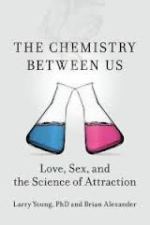 This is an engaging book that addresses questions such as:
This is an engaging book that addresses questions such as:
- How does love begin?
- What drives mothers to care for their babies?
- What accounts for the gender of the people at whom we aim our affection?
- What does it mean to say one is male or female?
The book is based on rigorous research using data from both animal and human subjects. It has been written to be accessible to a non-scientific reader. In order to build and develop the theoretical arguments to address the above questions, Young and Alexander describe and explain the significance of the experiments carried out—some readers may find this aspect of the book disturbing.
Young and Alexander manage to convey complex theory in a clear and concise manner. Effective use is made of wry humour to lighten what could be quite dense material. Diagrams are occasionally used to help clarify particular issues, though on a personal note I have to admit that I did occasionally skip over some of the more technical terms.
Some of the assertions made in the book are based on research results derived from animal trials, but the point is made that ‘animals are under the influence of the same neurochemicals as people when it comes to mating and reproduction’ (p4). Where the research is based on animals, and there is no scope for repeating the same experiments with human subjects, the authors clearly state that they are dealing with theoretical models of behaviour only.
The section on the development of gender and the difference between the gender of the body and the gender of the brain is particularly interesting. This is one area where significant evidence from donated human brains provides a supporting research base for the differences found between female, male, homosexual and trans-sexual brains.
In relation to the ‘nature v. nurture’ debate, Young and Alexander describe how genes can be turned down, or switched off in response to the environment. The study of this phenomenon is called epigenetics. This means that an individual’s behaviour is influenced by both their genetic inheritance, and the epigenetic legacy of the way they are treated by their parents. So, for example, poor parenting instincts can be both inherited and reinforced by experience.
It is fascinating to think that behaviour can be prompted by the action of particular molecules in the brain. When it comes to bonding between males and females, the authors argue that there are three key ingredients: oxytocin to facilitate the approach, opioids to create the ‘wow’ of sex, and dopamine to imprint the association between the stimulus and the reward. It is oxytocin, however, that is key to bonding and monogamy—at least between prairie voles—it is the secret to developing a social memory.
Gwyneth Jones in the Bold as Love series has two of the main characters ‘doing oxy’ as a means of exploring and deepening the emotional bond between them. Young and Alexander are keen to point out that oxytocin does not act in the way that pop-culture imagines.
It is well documented that oxytocin is released into the blood when people have sex. It is also the case that, in relation to body size, men have the biggest penis of any primate. Young believes that the human penis has evolved to trigger the release of oxytocin in a woman’s brain during intercourse—the bigger the penis, the bigger the oxytocin surge. This acts to strengthen the bond between partners, particularly for the women.
There is clearly more to building and maintaining a relationship than simple behaviour stimulated by cocktails of various hormones acting on the brain. This book, however, provides an insight into how the chemistry of our bodies can influence our choices.